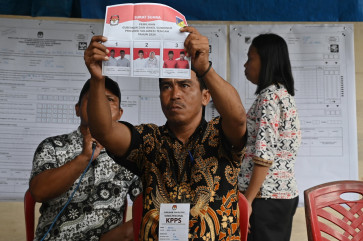Popular Reads
Top Results
Can't find what you're looking for?
View all search resultsPopular Reads
Top Results
Can't find what you're looking for?
View all search resultsHow investor biases can enable fraud in start-ups
In the eFishery case, reported sales of 400,000 fish feeders versus the verified 24,000 should have been an instant red flag, but investors prioritized growth potential over verifying operational reality.
Change text size
Gift Premium Articles
to Anyone
T
he eFishery fraud case is significant not only because of the US$600 million financial misrepresentation but also due to the involvement of major global investors in its Series C funding round, such as Temasek, SoftBank Vision Fund 2, Sequoia Capital India and Northstar.
As the world's first agritech unicorn, eFishery, though based in Singapore but initially operating in Indonesia, has become a highly visible symbol of Indonesia's rapidly growing start-up ecosystem, showcasing the potential for future innovation and providing a model for other start-ups in the region.
The narrative surrounding the fraud is often oversimplified, portraying the founders as the sole perpetrators, while investors' roles in potentially enabling the misconduct have been left unexamined. The reality is more complex. Investors, venture capital (VC) firms, private equity firms and board members, who are typically seen as neutral or passive, play a critical role in shaping the environment where financial misrepresentation can occur.
With their own biases and misjudgments, they may inadvertently contribute to the persistence of fraudulent behavior, either by ignoring early warning signs or by enabling the conditions in which misconduct is allowed to flourish. Rather than assigning blame to any one party, it is essential to understand how the collective system, shaped by both founders and investors, allowed this fraud to unfold.
While VCs do not dictate founder behavior, they control the rigor of their vetting processes. Investors must apply stringent due diligence, not as a courtesy, but as a fundamental duty. The most significant failure in eFishery was not just that fraud occurred, but that it went undetected for so long, since 2018.
Confirmation bias played a role, investors selectively accepted information that aligned with their expectations while disregarding warning signs. Some firms conduct deep forensic audits before investing, while others, driven by social proof bias, take shortcuts. In the eFishery case, reported sales of 400,000 fish feeders versus the verified 24,000 should have been an instant red flag, but investors prioritized growth potential over verifying operational reality.
Optimism bias further exacerbated this problem. VCs inherently bet on the future, assuming financial missteps will be corrected as the company matures. In the case of eFishery, early inconsistencies may have been dismissed as growing pains rather than systemic fraud. This misplaced confidence delayed necessary intervention, allowing financial misrepresentation to escalate.


















